Lawn care tips: 12 essential tasks for healthy turf
These lawn care tips are crucial for getting gorgeous grass all year round
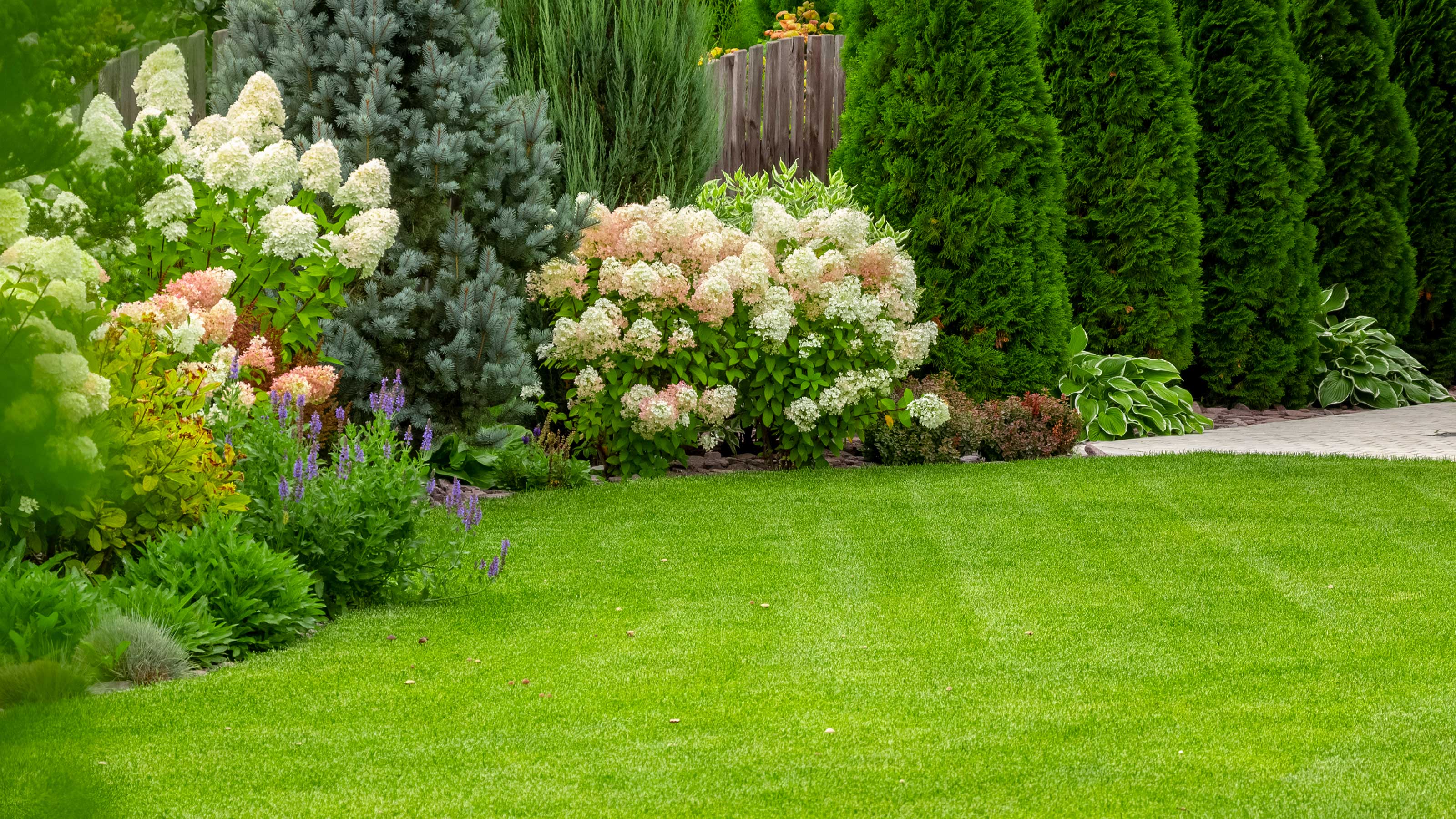

Get a few good lawn care tips up your sleeve and you can transform your garden's grass into a healthy and luscious stretch of green. Whether you have turf in your front or backyard, chances are you'll want it to look its absolute best – and that's where we can help.
Caring for a lawn can seem a little daunting at first. They're not exactly a low-maintenance feature, especially when compared to paving. Without proper knowledge, it's easy for things to go wrong. And, instead of verdant turf, you may be facing a muddy, patchy, lackluster sight, perhaps littered with weeds.
But there's no need to despair – proper TLC is all it takes to get it looking great again. We've brought together all the essential lawn care tips to get you the greenest grass on the block.
12 lawn care tasks to add to your to-do list
Work these tips into your garden maintenance routine and your lawn ideas will have a whole new lease of life.
1. Perfect your mowing technique
Invested in the best lawn mower? You're off to a good start, but that's only half of it: learning how to mow a lawn properly is also crucial.
There are some key dos and don'ts to bear in mind when cutting the grass for the best results. For instance, David Hedges Gower, chairman of the Lawn Association, explains how 'bad mowing – cutting too short and cutting with blunt blades – causes tremendous damage to lawns.'
The solution? 'Never cut more than one-third of the existing length, and sharpen your blade several times a year.'
Not cutting too short is particularly important when doing your first mow of the season in spring. 'Gradually reduce the grass length over a number of weeks to reach the desired length,' says the lawn experts at Flymo. 'Cutting the grass too short, too fast is known as "scalping" which can lead to disease and weed infestation.'
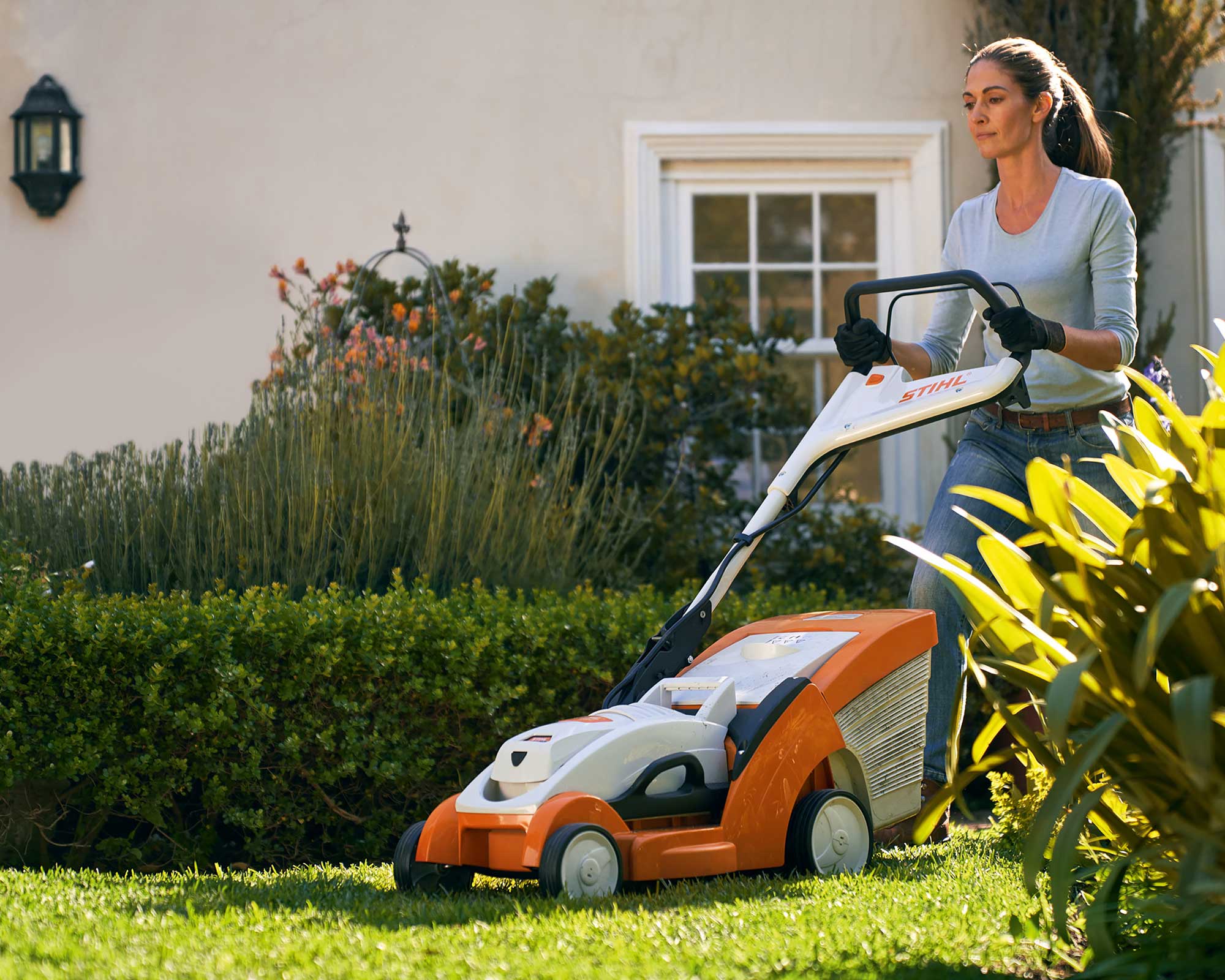
Mowing your lawn properly is a key step in keeping it in top shape
2. Nourish your lawn with fertilizer
Fertilizing plants can give them a real boost, and that goes for your lawn, too.
'We are all guilty of starving our lawns; each time we mow, we're removing some of the grass' food storage and tossing it into the compost,' says David Hedges Gower.
'So, don't be mean and feed only once a year. Plants need food – and they need the right food for each season. A good lawn feed program is easy to devise and follow – and it makes a huge difference to the strength of your lawn, however many times you mow.'
David continues: 'It's easy to miss patches when applying fertilizer. You can avoid this by working in two directions, or going over the lawn twice, using half the quantity on each run.'
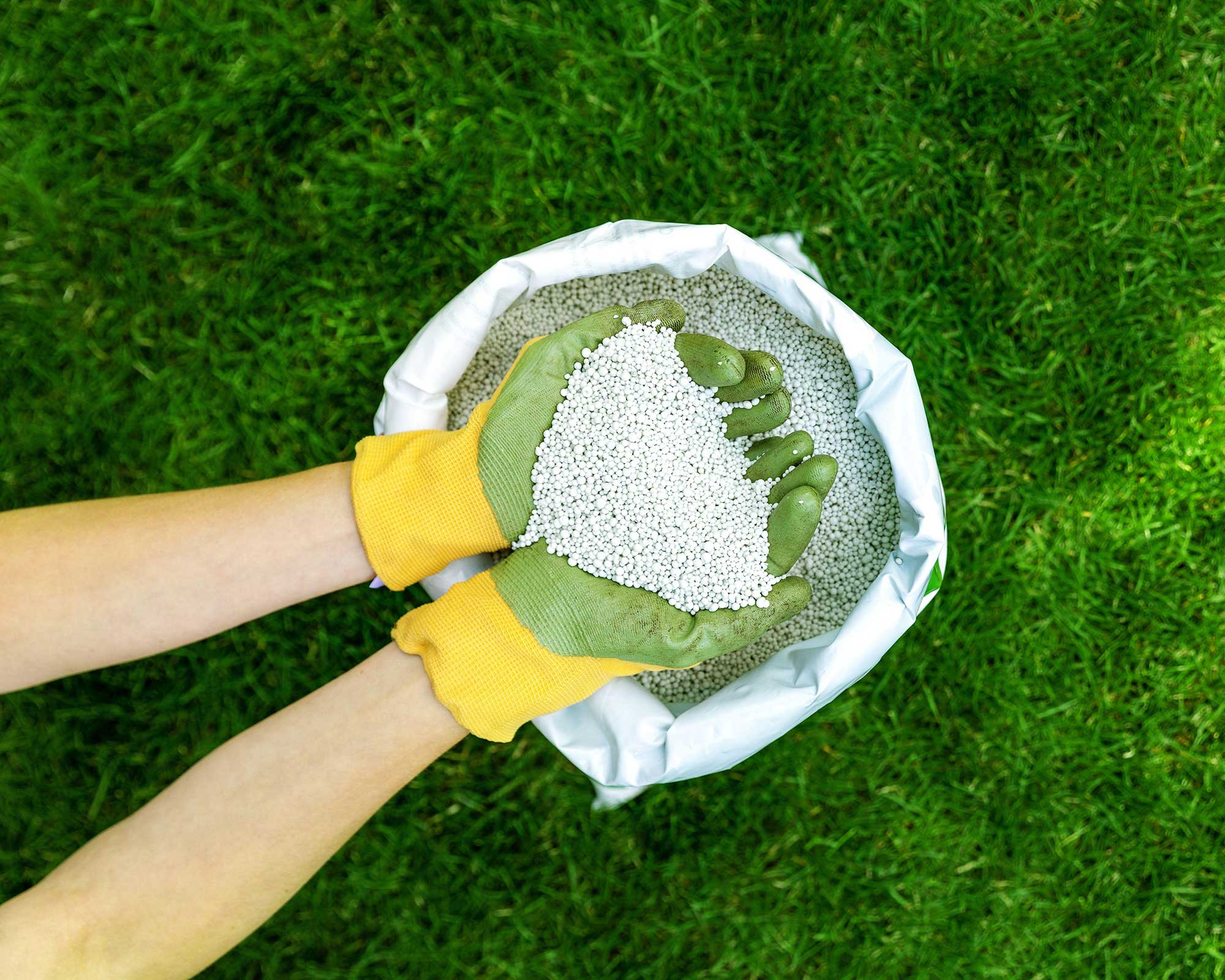
Switch up your lawn fertilizer depending on the season
3. Aerate your turf to help it breathe
'One of the most important and beneficial things you can do for your lawn is to help it to breathe – but I'm talking about aerating below the surface, not up on top,' says David. This breaks up compaction in the soil, making it easier for oxygen, water, and nutrients to get to the roots of your grass, resulting in healthier turf.
While some people choose to use a garden fork to do so, David recommends using a hollow-tine aerating tool instead. These carefully remove tubes of soil without disturbing the surrounding earth, he explains. You can either buy a hollow-tine fork or hire a mechanical hollow-tine aerator.
Our guide on how to aerate a lawn has step-by-step advice if you need more info.
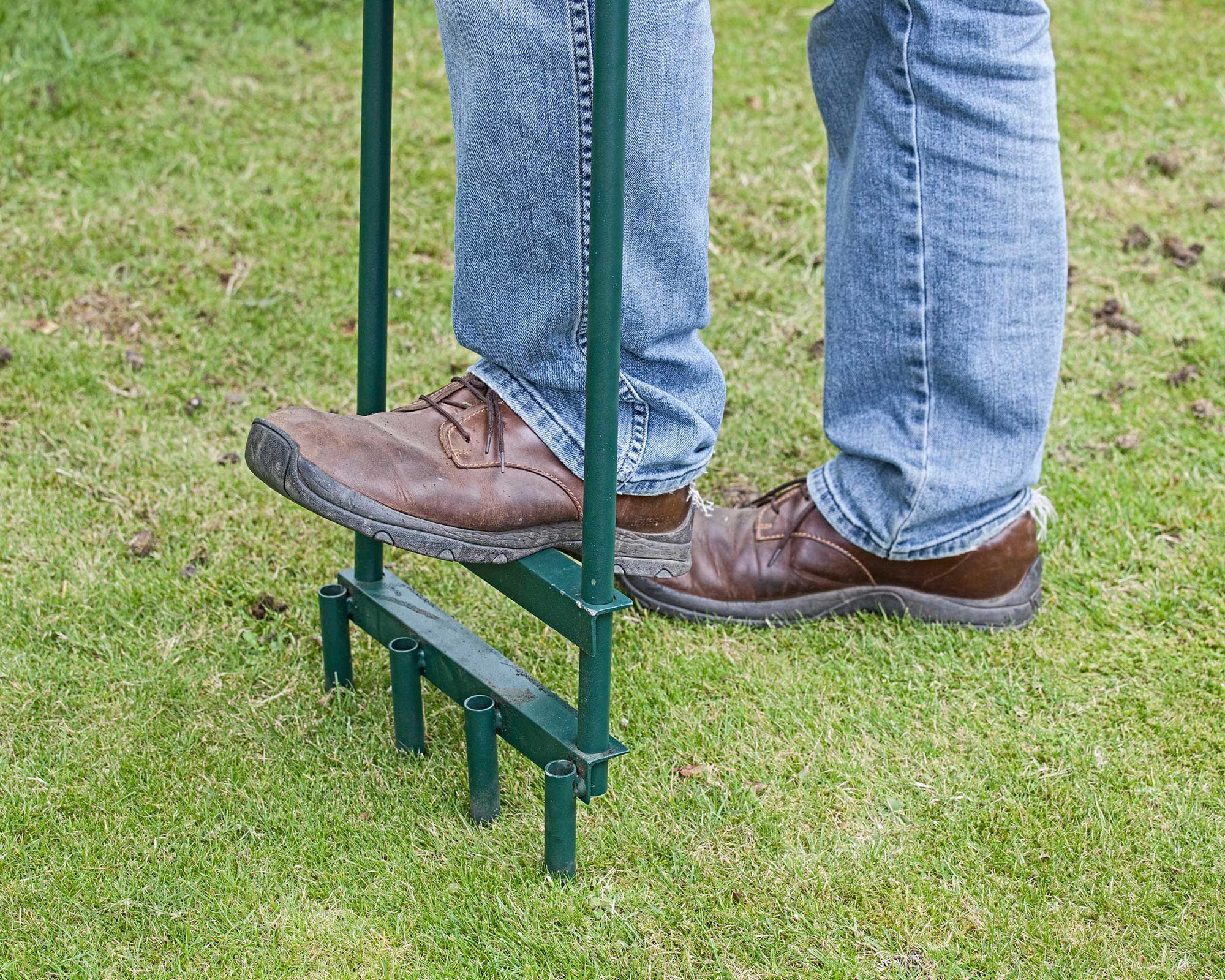
Break up compaction by aerating your lawn
4. Thin out the thatch
Over time, accumulated dead grass, decaying shoots, and other debris can choke the grass and prevent water from reaching the soil, as David explains. But this can be prevented once you know how to scarify a lawn.
This lawn care method is simple, really. All you need is a rake, or if you don't want to do it by hand, invest or hire a scarifying machine to remove the build-up of thatch.
'Try to scarify lightly and in two directions,' David advises. 'It's better for the grass and the lawn will soon look fabulous once again.'
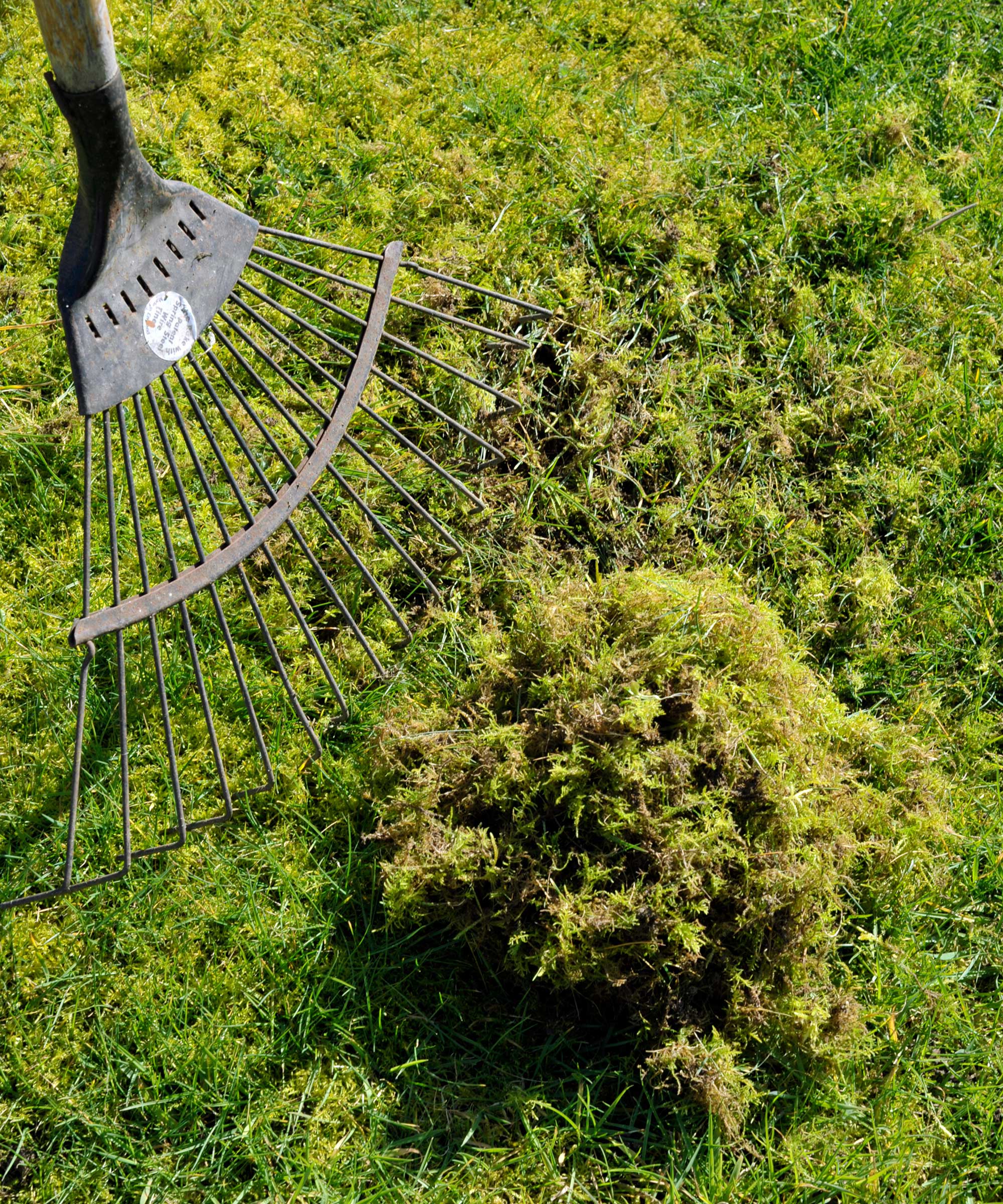
Remove build-up with a garden rake
5. Tackle the weeds
If you want a pristine lawn, you'll need to know how to get rid of lawn weeds, whether they're dandelions, clover, or couch grass. Luckily, there are a good few methods for keeping these intruders away.
Alternatively, you may want to embrace the odd weed or two, especially if they're the flowering kinds. They can be great for encouraging pollinators to your plot, and offer a more relaxed, wild look to your garden.
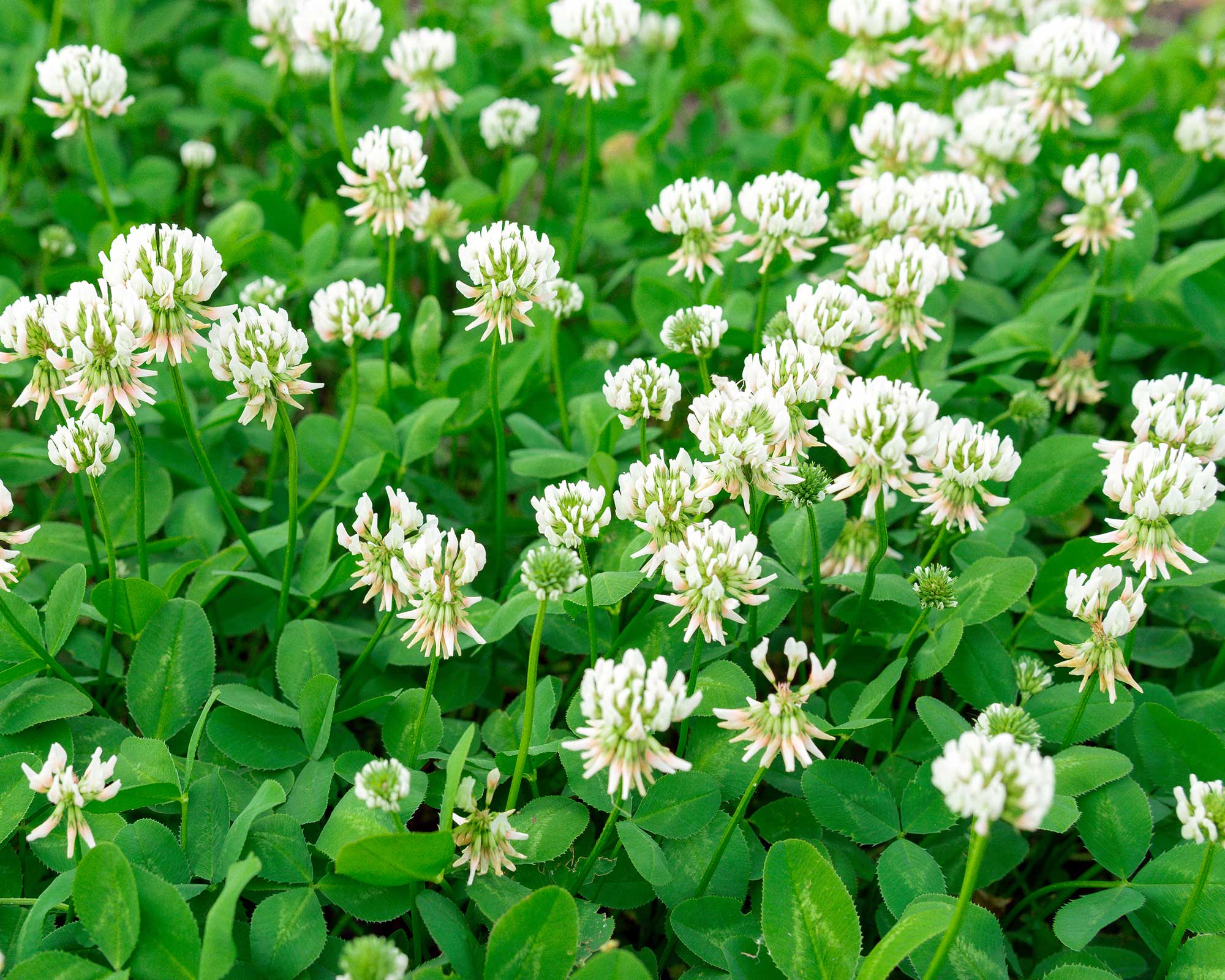
Some people choose to keep clover in their lawns as the bees adore it
6. ...and the moss
Moss is a common issue when it comes to lawns – particularly in damp, shady areas with clay soils. And while some gardeners don't mind the plush green growth, those who are after a more traditional stretch of turf will likely want rid of it.
David advises embarking on a 'moss-minimization plan', to prevent the problem from taking hold. This includes steps such as keeping thatch at bay, keeping the lawn clear of debris (especially in fall and winter), and using moss killer only after scarifying, not before, so it can get right down to the base of the nuisance plants.
Our guide on how to get rid of lawn moss has more in-depth advice.
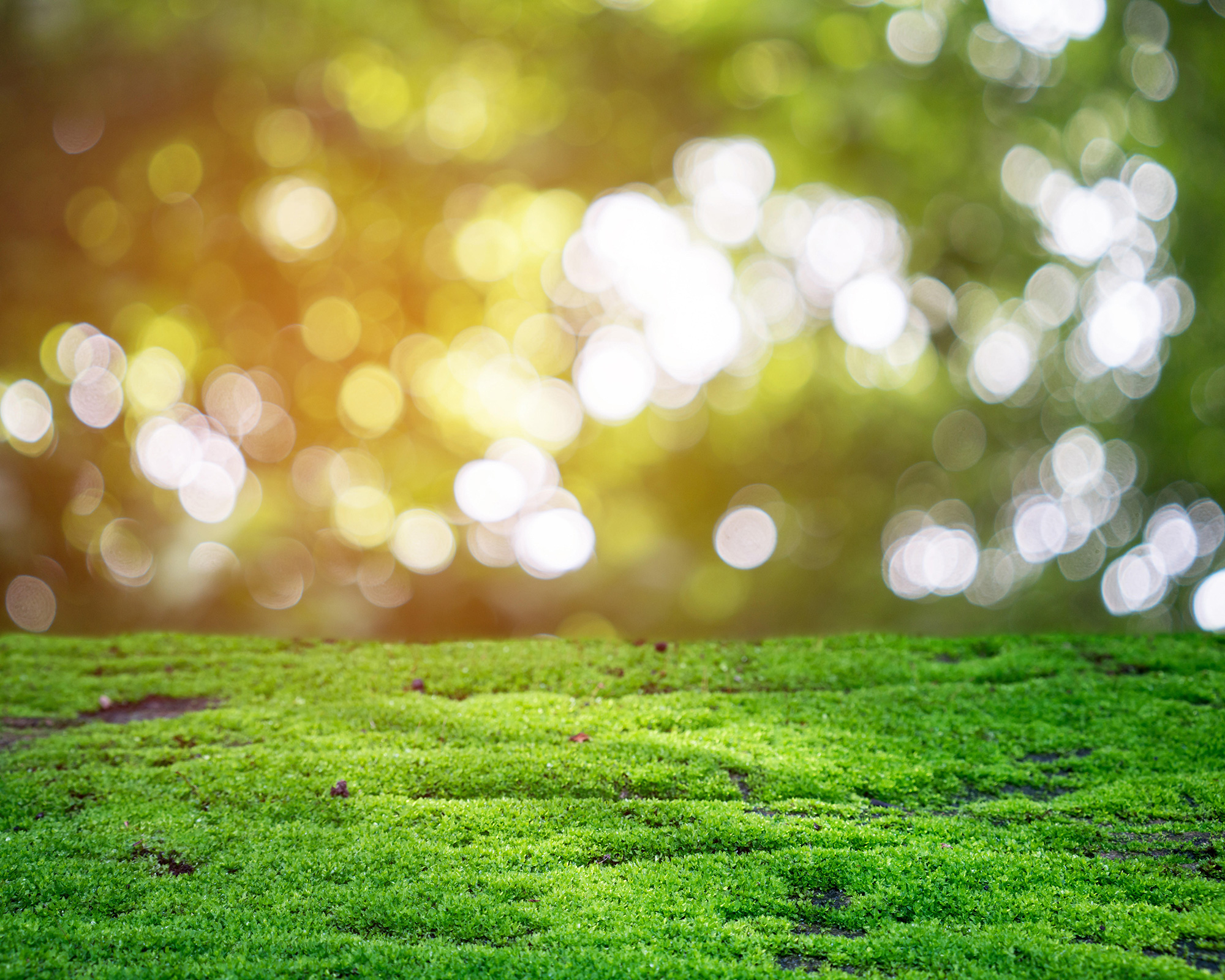
Moss tends to grow in shady, damp lawns
7. Fix up those bare patches
Bald patches can appear in grass due to all sorts of reasons. But they needn't be a reason for concern, as learning how to repair lawn patches with seed is really straightforward.
Just be careful not to bury the seeds too deep, as David advises. They need both sunlight and water to pop open and launch their tiny seedlings, he says.
Take precautions when mowing freshly-sown lawns, too. 'New grass that has been grown from seed will be noticeably weaker than the rest of the lawn and can be easily damaged if cut incorrectly,' says Flymo. 'It's best to wait until the grass has grown over three inches in length until mowing for the first time, to allow it time to build up strength.'
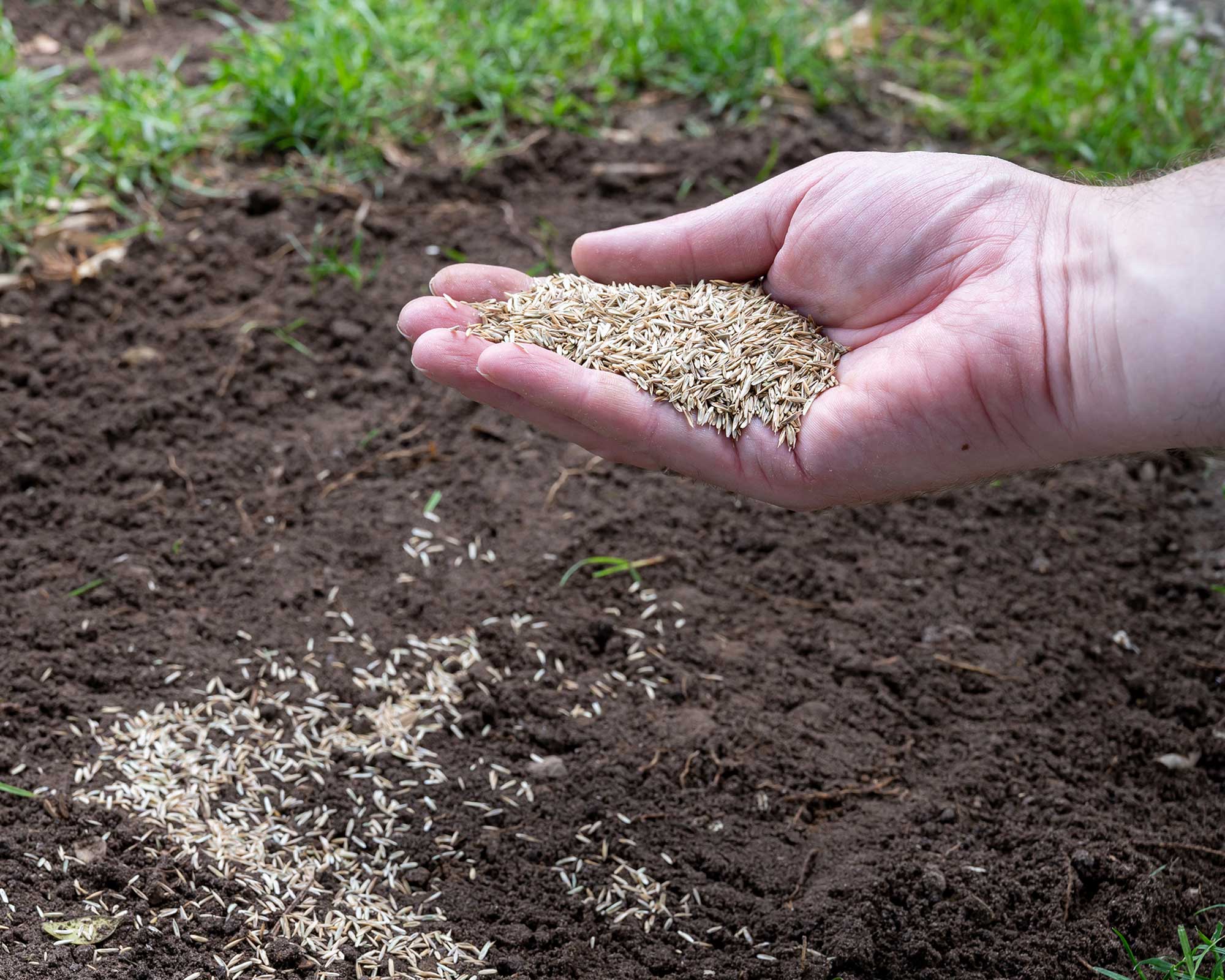
Sow new seeds to repair bald patches
8. Keep the edges neat
A surefire way to elevate the look of a lawn is by adding in some smart lawn edging ideas. From modern metal to rustic timber, there is a style to suit every sort of plot. And they're not just for aesthetic value – they'll make maintenance easier too, as will help keep mulch or gravel from surrounding borders and paths in their proper places.
Even if you decide against installing edging, neatening up the perimeter of your lawn goes a long way in making it look tidier. As Flymo says, 'Overgrown edges can look unsightly and can mean time and effort spent working in the garden has been in vain.'
You can use simple edging shears, an edging tool, or invest in cordless, battery-powered devices for getting the job done quickly.
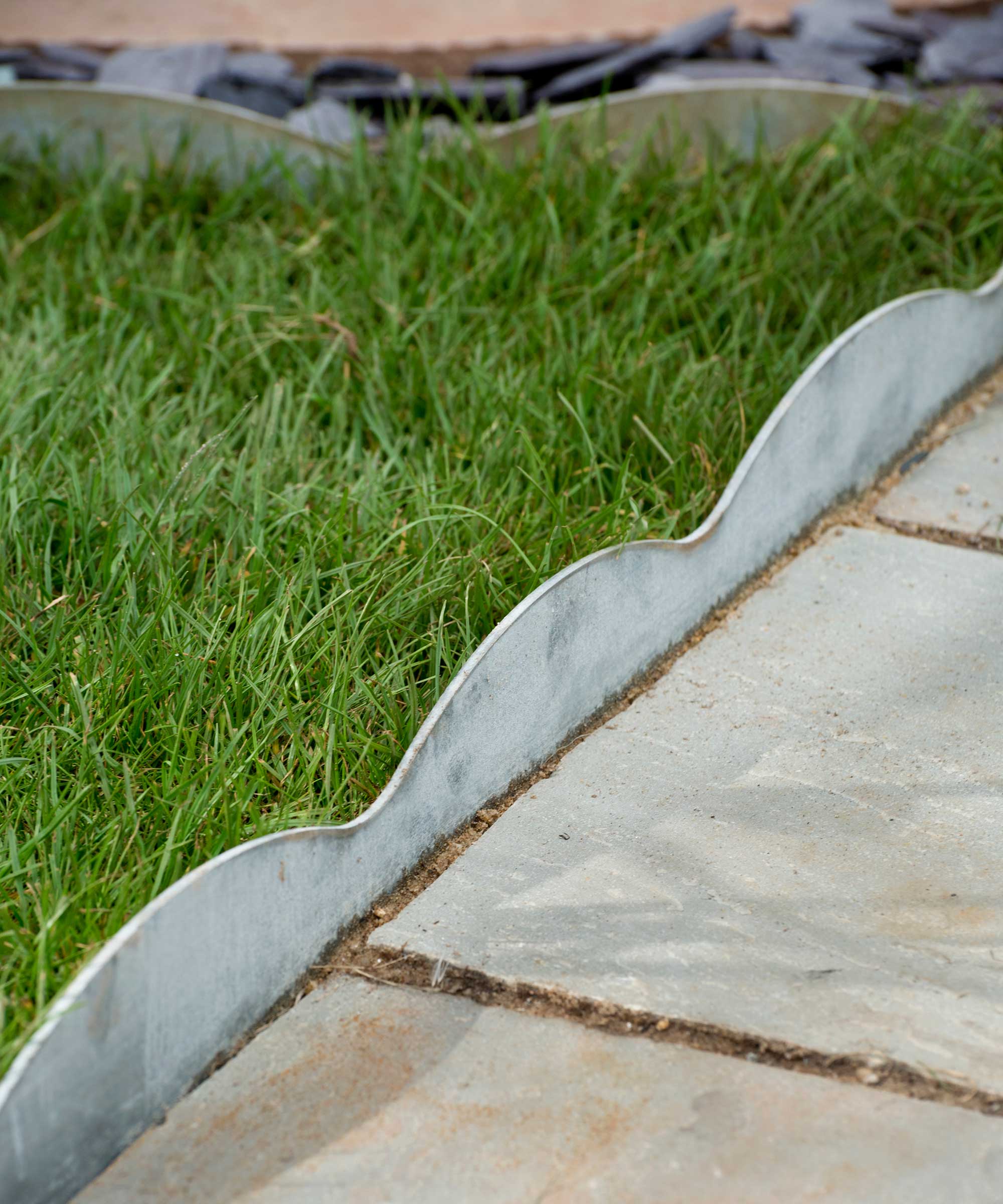
This metal edging offers a modern look for the lawn
9. Deter lawn pests
Pests are many gardeners' woe – from aphids on the roses to slugs on the hostas. And unfortunately, lawns have their own fair share of pesky intruders that can ruin once-pristine turf.
But, whether you need to learn how to get rid of moles or how to get rid of lawn grubs, there are steps you can take to reclaim your grass and get it back to its former glory. Our dedicated guides explain all.
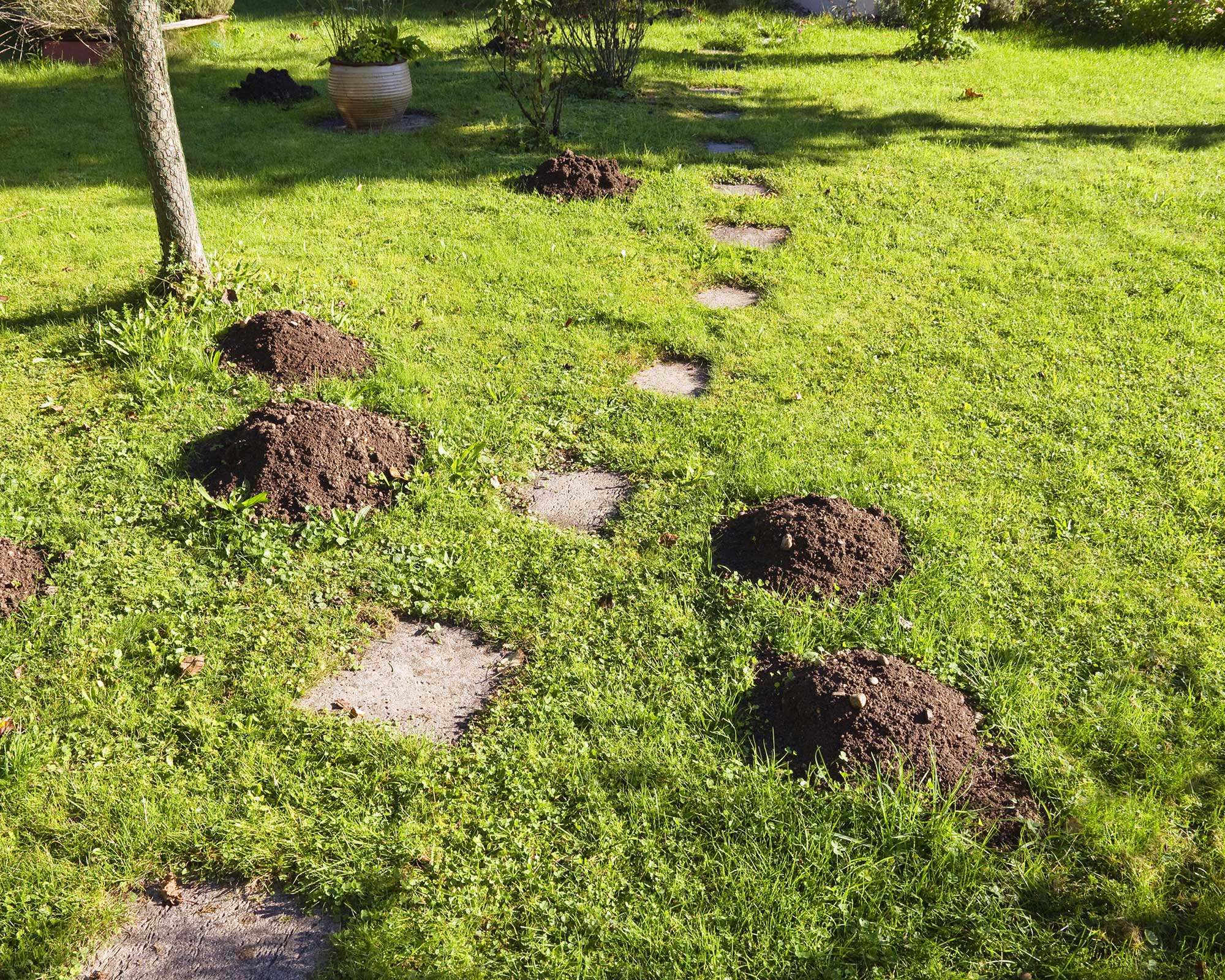
Moles can be a nuisance
10. Don't let your dog destroy your lawn
Four-legged, furry friends are wonderful, but maintaining an immaculate lawn with them around can prove tricky. Digging, urinating, treating it like a race track – there are all sorts of ways that they can wreak havoc on your turf.
Luckily, it is possible to keep a lovely lawn and your beloved pet – you just need some top tips on how to grow grass with dogs.

Dog urine can cause dead patches in your lawn
11. Keep it hydrated
Long, hot summers can scorch a lawn and turn it dry and brown. So, an important part of lawn care is to keep it hydrated. One of the best garden sprinklers will come in handy here. As David says, 'using a sustainable water source is great.' So, consider utilizing your water butt for a more sustainable garden.
The type of grass you choose will affect how well it stands up to your climate, too. As David says, 'lawns with native grasses survive better than any other.
'Using water efficiently is essential too,' David adds. 'During hot spells (when we need to water) grass will make more use of a smaller amount of water during the evening,' – so this is the best time to water your lawn.
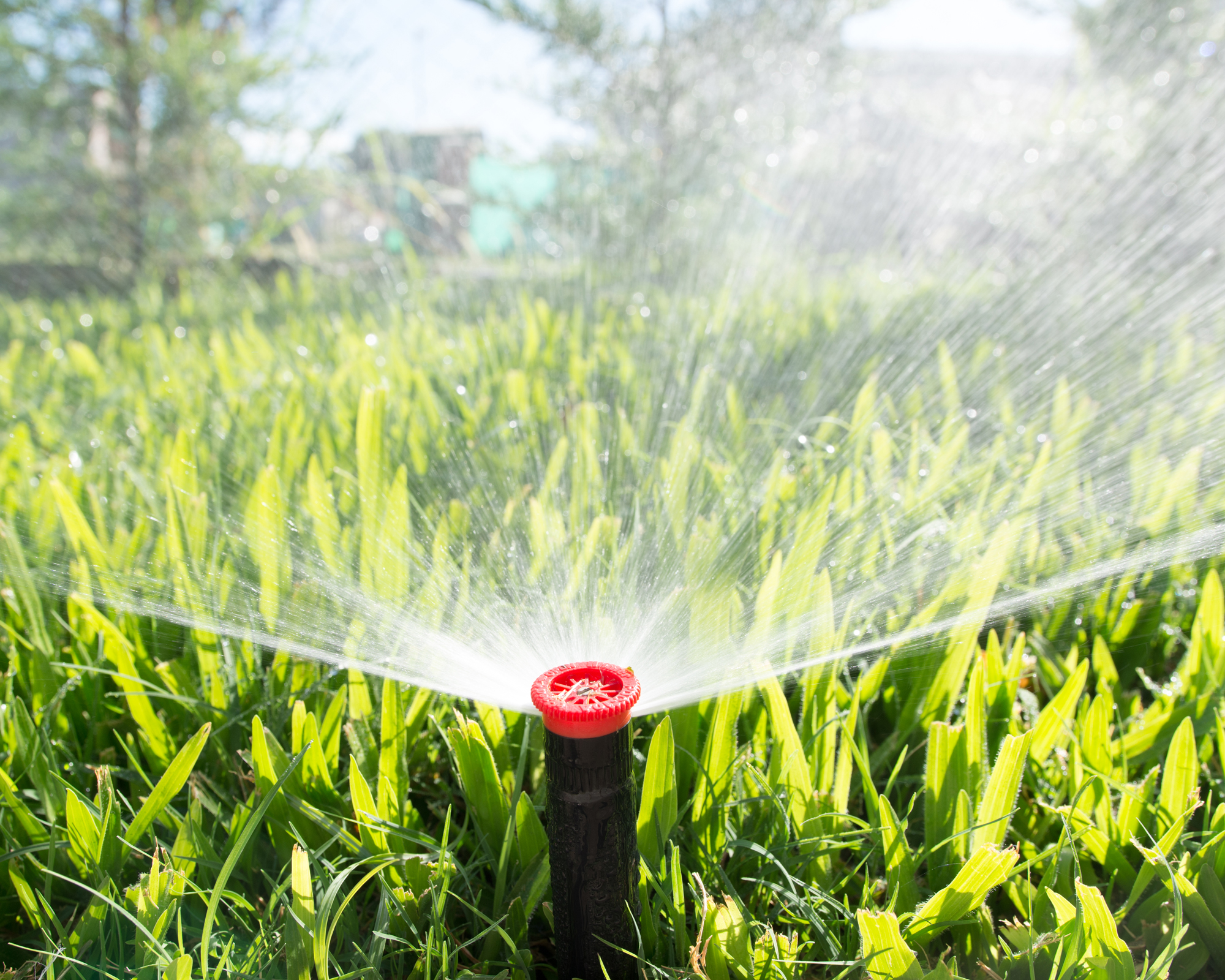
Like all plants, grass needs water to thrive
12. Clear up debris
'It is generally suggested to remove leaves from the lawn as they take a long time to rot down or for worms to take them into their burrows,' explains John Negus, garden expert for Amateur Gardening.
'During this process, they would remove any light from the grass and this would result in the grass beneath dying out and leaving brown empty patches that would soon be invaded by weeds.'
To avoid this, get outdoors and rake up fallen leaves regularly in autumn. Learn how to make leaf mould, and you can put them to good use.
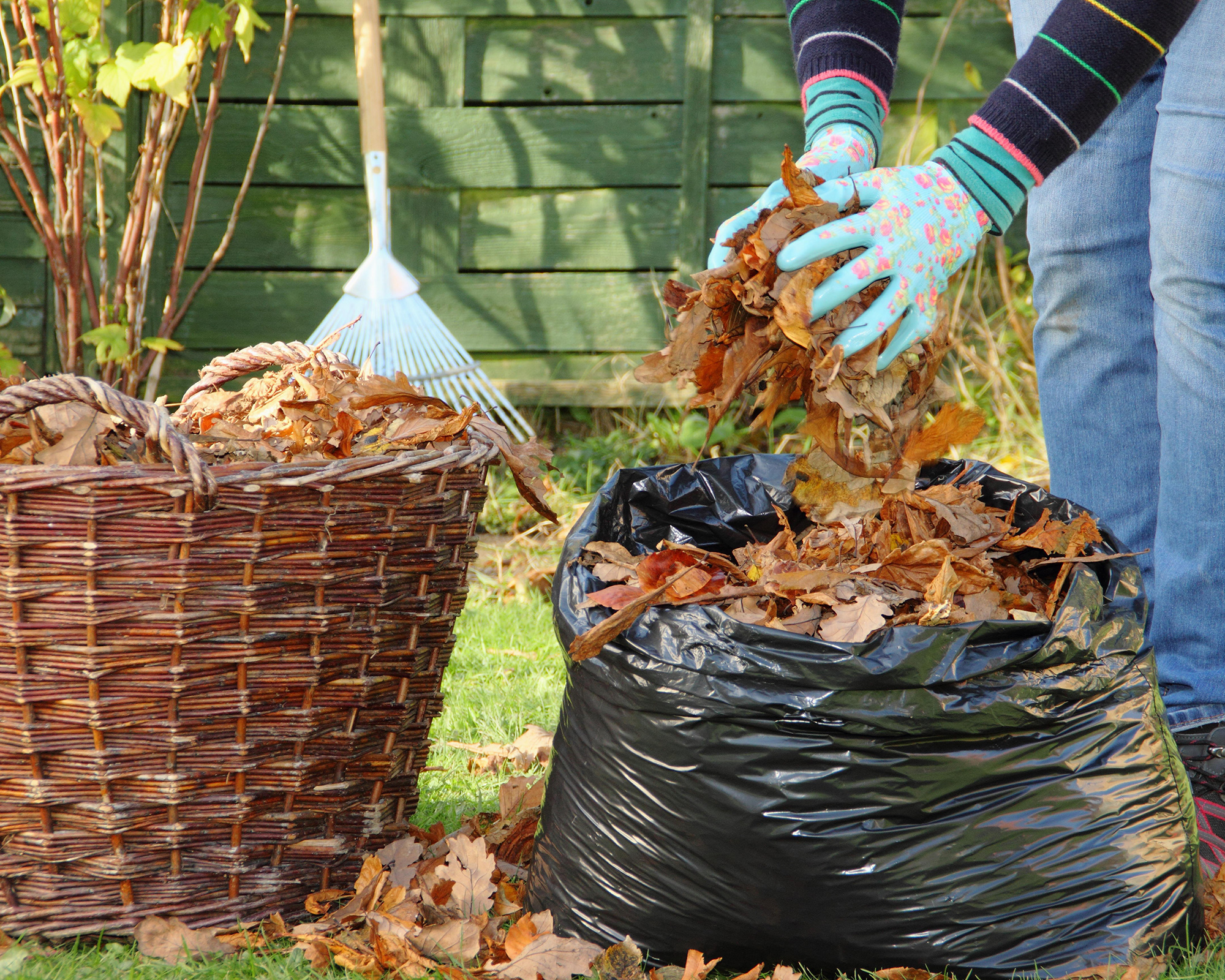
Clean up your plot

The garden was always a big part of Holly's life growing up, as was the surrounding New Forest where she lived. Her appreciation for the great outdoors has only grown since then. She's been an allotment keeper, a professional gardener, and a botanical illustrator – plants are her passion.
